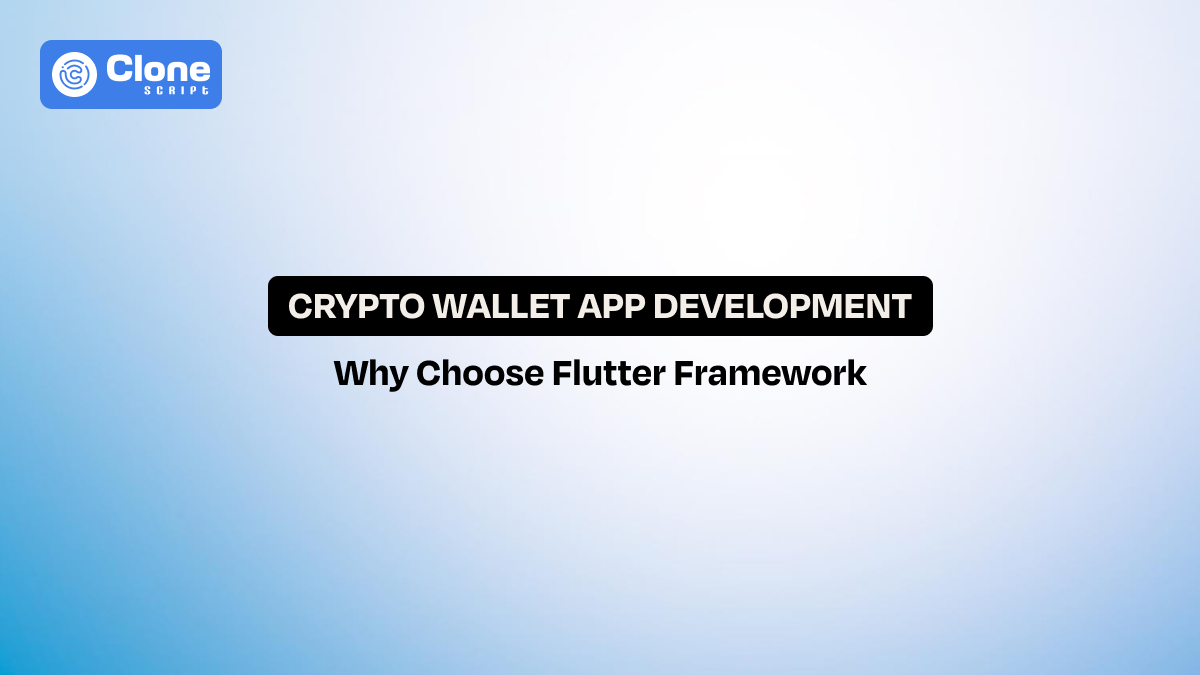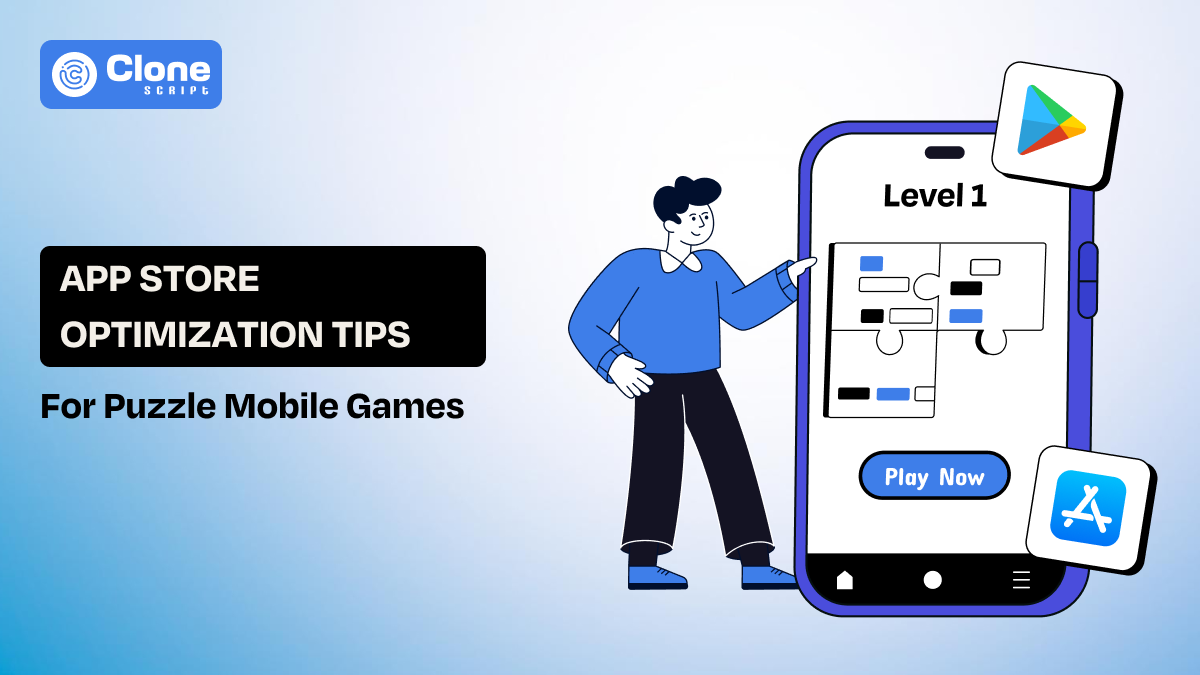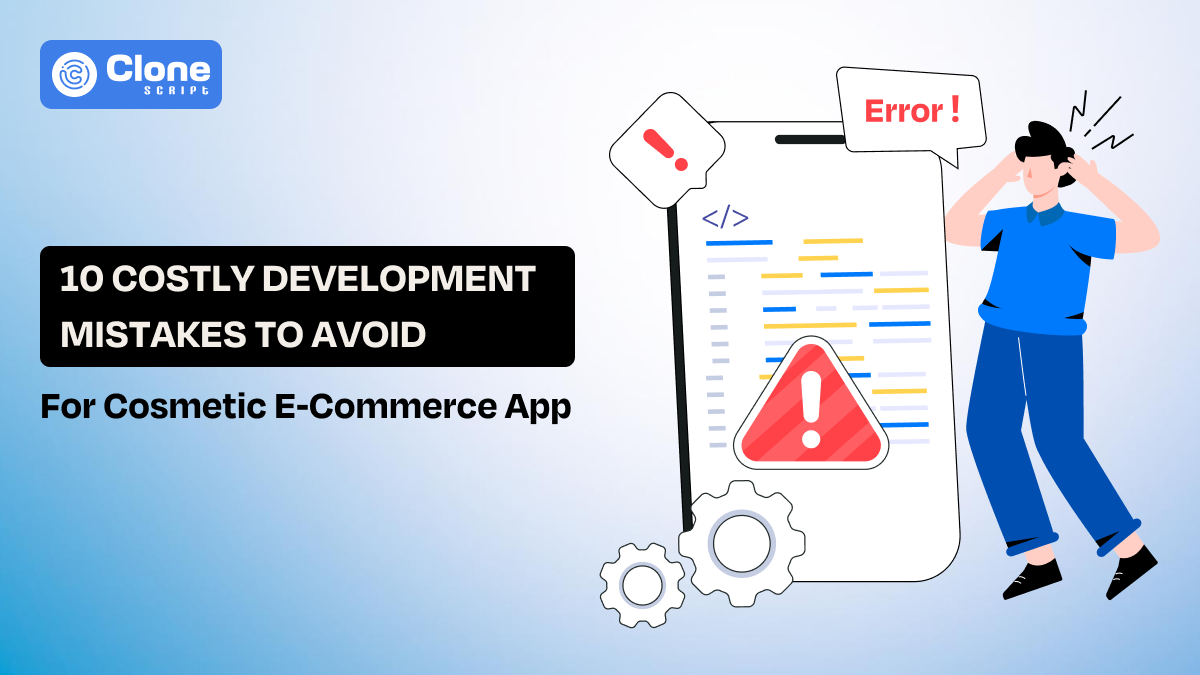Why Flutter Is the Best Choice for Crypto Wallet App Development
The global cryptocurrency market has come a long way since Bitcoin first appeared in 2009. Today, digital assets have become part of everyday financial transactions, from peer-to-peer payments to NFT purchases. In this ecosystem, crypto wallet apps are working 24*7 just like fintech apps do. They allow users to safely store, send, and receive digital currencies.
If you’re planning to build a secure crypto wallet app with Flutter, you’re already on the right track. Flutter’s speed, flexibility, and cross-platform nature make it an ideal choice for developers. Startups are looking to enter the blockchain space without compromising quality or user experience.
In this blog, we’ll explore why Flutter is the perfect fit for crypto wallet development, what features your app must have, along how you can save months of effort using Flutter templates.
The Growing Demand for Crypto Wallet Apps
According to Statista, the number of cryptocurrency users surpassed 560 million in 2024. This figure continues to reach new heights as digital asset ownership becomes mainstream for users.
The need for a secure wallet solution is in demand. As casual investors are buying the first BTC and merchants are accepting the payments in stablecoins, a user-friendly platform is required.
Each new user entering the crypto space needs a safe and user-friendly wallet, and this makes wallet apps one of the most in-demand fintech products today. Ultimately, it’s not just about individuals and enterprises, but DeFi platforms and NFT marketplaces also depend on wallets to onboard users into the blockchain economy.
But building a wallet from the first step isn’t easy. You need the following:
-
Top-notch security to protect sensitive private keys and prevent hacks.
-
Seamless cross-platform performance to serve both Android and iOS users without doubling the effort.
-
Scalability to handle growing transaction volumes and network demands.
-
A clean, intuitive UI because crypto can feel intimidating to newcomers.
-
Regulatory compliance considerations since crypto apps increasingly face scrutiny from financial authorities.
These challenges can quickly overwhelm even experienced developers. That’s exactly where Flutter truly shines.
Why Flutter Is the Perfect Fit for Crypto Wallet Apps?
Flutter has quickly become the go-to framework for fintech and blockchain app development, and for good reason. It maintains the perfect balance between speed, flexibility, and performance. These factors are important when building financial apps that demand security and reliability.
Let’s understand them in detail.
-
Cross-Platform Consistency
With a single codebase, you can build a cross-platform crypto wallet in Flutter that runs flawlessly on Android, iOS, desktop, and even the web. This not only reduces development costs but also guarantees users get the same smooth experience across devices. There’s no need to maintain separate apps or deal with fragmented updates.
-
Speed of Development
Flutter’s “hot reload” allows developers to instantly see changes and making the development process faster and flexible. This is important in the fast-moving crypto industry, where trends shift quickly and new token standards or blockchain integrations may need to be added at short notice. In essence, faster iterations mean you can launch updates before competitors go towards custom development.
-
Customizable UI/UX
Flutter is famous for creating beautiful, smooth interfaces. A Flutter wallet app can easily adopt modern, intuitive designs that build user trust, an essential element for financial apps. For example, you can design dashboards that clearly show balances, portfolio growth, and transaction histories without confusing first-time users. A polished interface helps in clarifying crypto to newcomers.
-
Robust Performance
Unlike hybrid frameworks that depend heavily on web views, Flutter compiles to native ARM code. This means your Flutter cryptocurrency app performs just like a fully native app. Low latency in transaction confirmations, fast QR code scanning, and smooth animations in portfolio charts are all possible without sacrificing efficiency.
-
Strong Community & Ecosystem
Flutter has a large, active community that continuously builds plugins, packages, and libraries. With the growing number of blockchain SDKs and APIs, you’ll have the tools to integrate exchanges, DeFi platforms, NFT marketplaces, and even staking services into your app with less hassle. For developers, this means fewer roadblocks and faster problem-solving.
In short, Flutter isn’t just a convenient option — it’s a future-proof framework that enables you to build secure, scalable, and user-friendly crypto wallet apps without compromise.
Must-Have Features in a Flutter-Based Crypto Wallet
A crypto wallet isn’t just another app — it’s a financial product where trust, security, and usability must go hand-in-hand. If any of these factors are missing, users won’t risk storing their digital assets in your app. Below are the must-have features your Flutter-developed crypto wallet app should include:
-
User Authentication
Strong authentication in Web3 is non-negotiable. Options like biometrics (Face ID, fingerprint) or 2FA add an extra layer of protection beyond passwords. Many modern wallets also integrate hardware-based authentication for advanced users.
-
Multi-Currency Support
The crypto world is bigger than Bitcoin. Supporting Ethereum, stablecoins, and well-known meme coins referred to as altcoins helps you reach a wider audience. Some wallets even expand to NFTs and DeFi tokens, giving users more reasons to stick with your app.
-
Transaction History & Real-Time Balance
Users should be able to track every transaction, from pending to confirmed, along with seeing real-time portfolio updates. A clean dashboard with charts and filters can make financial tracking less intimidating. Considering modern dashboard UI and UX designing principles helps in that to make the platform inclusive for every kind of user.
-
QR Code Payments
Cryptocurrency payments are done with speed and simplicity. Scanning and generating QR codes makes sending and receiving funds as easy as paying with Apple Pay or Google Wallet. That’s the kind of seamless experience users expect.
-
Private Key / Seed Phrase Backup
Security-conscious users know that wallets are only as safe as their recovery process. Provide simple, step-by-step flows for backing up and restoring private keys or seed phrases. Without this, even the most secure app risks losing user trust.
-
Push Notifications
Timely alerts keep users engaged and informed. Notifications for received funds, transaction confirmations, and significant price movements can improve the overall user experience and keep your app top of mind.
-
In-App Exchange Integration
Allowing users to swap one crypto for another without leaving your app reduces frustration and improves retention. It works by combining a wallet with a mini exchange that saves users time and builds loyalty.
-
Bonus: Customer Support Access
While not usually mentioned, a built-in support channel (chatbot or live chat) reassures users that they can get help if something goes wrong. In a high-stakes space like crypto, this feature can be a game-changer.
These features as the “minimum trust factors” for your wallet. A wallet without them won’t be taken seriously in 2025’s competitive environment.
Step-by-Step: Launching Your Crypto Wallet App with Flutter
Let’s simplify the process into actionable steps:
1. Define Your Vision
Decide whether your wallet is focused on payments, trading, DeFi, NFTs, or a hybrid. Define your target users (beginners, power traders, institutions) and the core problems you’ll solve. This drives feature priorities and compliance needs.
2. Choose the Right Tech Stack
Use Flutter for the frontend app development to build a consistent wallet app across platforms. Pair it with blockchain APIs and services (Web3-style libraries, node providers, indexers, price feeds) and choose a backend language/platform that supports secure key handling and rate-limited requests.
3. Start with a Template
Pick a reputable Flutter template for a crypto wallet app to accelerate the UI, wallet flows, and core integrations. A good template reduces boilerplate and lets you focus on differentiators instead of reinventing standard wallet behavior.
4. Customize the UI/UX
Tailor onboarding, wallet creation, and recovery flows to your audience. Keep screens simple, use progressive disclosure for advanced features, and design clear error states. A small UX details noticeably improve trust for first-time crypto users.
5. Integrate APIs
Connect to blockchain networks, price oracles, and exchange/fiat-on-ramp partners. Abstract network calls so you can add new chains or providers later without big refactors. This makes it easier to scale your cryptocurrency app.
6. Implement Security Features
Add biometrics, 2FA, encrypted local storage, and secure seed handling. Use well-tested crypto libraries, avoid storing plain private keys on servers, and consider hardware-wallet compatibility for power users.
7. Test Rigorously
Test on multiple devices and OS versions. Use public testnets for transaction flows, fuzz inputs, and run automated unit/integration tests. Include penetration testing and a third-party security audit before mainnet launch.
8. Prepare CI/CD & Release Processes
Set up continuous integration, automated tests, and a deployment pipeline for app store builds. Configure code signing, Fastlane, or equivalent tooling, and staged rollouts to catch issues early.
9. Launch & Market
Release to app stores with clear store listings, screenshots, and privacy/security messaging. Use targeted campaigns, developer content, and partnerships (exchanges, wallets, influencers) to build initial traction.
10. Monitor, Iterate & Support
Add analytics, crash reporting, and on-chain monitoring to spot issues and optimize UX. Offer in-app support or a help center and iterate quickly based on user feedback. This is useful for building ongoing trust.
11. Plan for Compliance & Growth
Consider KYC/AML, data privacy laws, and regional regulations early. As you grow, be ready to add compliance workflows, additional chains, fiat integrations, and enterprise features.
How to Speed Up Development with a Flutter Wallet Template?
The Flutter template for crypto wallet apps is a professionally designed starter kit; you get a head start on both the design and technical foundation of your project. Instead of coding every screen and function from zero, you inherit a solid base that’s already been tested and optimized.
Building a wallet app from scratch can take months and sometimes even a year if you’re developing everything in-house. From setting up blockchain APIs and integrating multiple networks to designing a secure onboarding flow, the process can quickly become overwhelming.
With the right template, you gain:
-
Pre-built UI components:
Template generally includes designed login screens, wallet dashboards, QR scanners, and settings pages that you can brand and customize to match your app’s style.
-
Integrated wallet functions:
Ready-made modules for sending, receiving, and tracking transactions across supported blockchains are available in premium templates.
-
Security modules:
Templates are optimized for biometric authentication, encryption flows, and seed phrase handling that save you weeks of implementation time.
-
Cross-platform readiness:
There’s no need to develop different versions of code for iOS and Android devices. Use the single codebase and launch the app for both kinds of operating systems. Even the web version can also be developed with the same.
-
Scalable architecture:
Flutter app templates come with a foundation that can be turned into a great product in the future. This makes it easier to add advanced features later, such as staking, NFT support, or DeFi integrations.
Ultimately, a wallet app template can help your team focus less on reinventing the wheel and more on customizing features, strengthening security, and building the unique selling points. It will set your app apart in a crowded market.
Why Choose Our Flutter Crypto Wallet App Template?
If you want to build a crypto wallet using Flutter without spending 6–12 months in development, our template can save you both time and money. It’s designed not just for speed but also for long-term scalability, a crucial factor in the rapidly evolving crypto space. Here’s why:
-
Ready-to-Launch: Comes with pre-built wallet features so you can go live faster and focus on user acquisition instead of core coding.
-
Modern UI/UX: Designed with a sleek, trustworthy app design interface that appeals to crypto users and helps build confidence from the first interaction.
-
Security First: Equipped with authentication, encryption, and seed phrase recovery modules, a critical Flutter component of a secure crypto wallet app.
-
Highly Customizable: Change branding, add new features, and integrate third-party services with ease to tailor the wallet to your business model.
-
Future-Proof: Optimized for Flutter 3 and designed with upcoming Web3 integrations in mind. This ensures your app stays competitive in 2025 and beyond.
Here’s the ready-made template to get.

With this template, you’re not just getting a codebase. You’re getting a shortcut to the market with the flexibility to grow, whether that means supporting new blockchains, adding NFTs, or offering DeFi features down the road.
Conclusion
To enter the digital asset world, especially in crypto, a wallet is the gateway. Crypto businesses searching for a reliable solution for making an app for a Web3 wallet, and Flutter remains a cost-effective and appropriate choice. It is useful for cross-platform development, gives native performance, and UI customization.
By starting with a Flutter wallet app template, you can cut months off development, reduce costs, and focus on innovation. Whether your vision involves payments, DeFi, or NFTs, Flutter gives you the flexibility to grow. The future of finance is digital, and Flutter puts you ahead of the curve.
FAQs
-
Why use Flutter for building a blockchain/crypto wallet?
Flutter lets you build visually rich and performant crypto wallet apps on both iOS and Android with one codebase. It's hot reload speeds up development, while robust rendering gives smooth real-time updates for users.
-
What types of crypto wallets can I develop?
You can build multiple wallet types:
-
Hot wallets, which are fast and online-accessible
-
Cold wallets, which are offline and more secure
-
Mobile, desktop, and web wallet variants, each tailored to different user needs.
The development of a crypto wallet depends on what you want to offer.
-
What tech stack is typically used to develop scalable crypto wallets?
Developers often pair Flutter with backend development technologies like Node.js or Python, blockchains like Ethereum/BSC/Polygon, and tools including WalletConnect or Ethers.js to build secure and scalable wallet systems.
-
Can Flutter connect to Web3 APIs or blockchain SDKs?
Absolutely. Flutter works well with Web3 integrations using packages like web3dart and backend services like Moralis or Alchemy. This makes it ideal for Flutter cryptocurrency app development.
-
How much does it cost to build a crypto wallet with Flutter?
Building a Flutter crypto wallet can cost $25,000–$150,000+. Basic wallets are cheaper, while advanced apps with DeFi, NFTs, or fiat on-ramps cost more. Using a Flutter wallet template cuts costs by up to 50%, saving both time and resources.
-
What are the typical steps to build a Flutter blockchain wallet?
Typical blockchain wallet development steps include:
-
Setting up the Flutter environment
-
Choosing blockchain libraries (like web3dart or bitcoin_flutter)
-
Building the UI
-
Integrating wallet logic
-
Testing on testnets before mainnet deployment.
With these steps, you can make the app like Metamask and Phantom.
-
Is it safe to build a blockchain wallet with Flutter?
Yes. Flutter supports secure coding practices and libraries. It allows developers to implement strong authentication, encryption, and other security measures vital for crypto wallet apps.
 BTC - Bitcoin
BTC - Bitcoin
 USDTERC20 - USDT ERC20
USDTERC20 - USDT ERC20
 ETH - Ethereum
ETH - Ethereum
 BNB - Binance
BNB - Binance
 BCH - Bitcoin Cash
BCH - Bitcoin Cash
 DOGE - Dogecoin
DOGE - Dogecoin
 TRX - TRON
TRX - TRON
 USDTTRC20 - USD TRC20
USDTTRC20 - USD TRC20
 LTC - LiteCoin
LTC - LiteCoin







